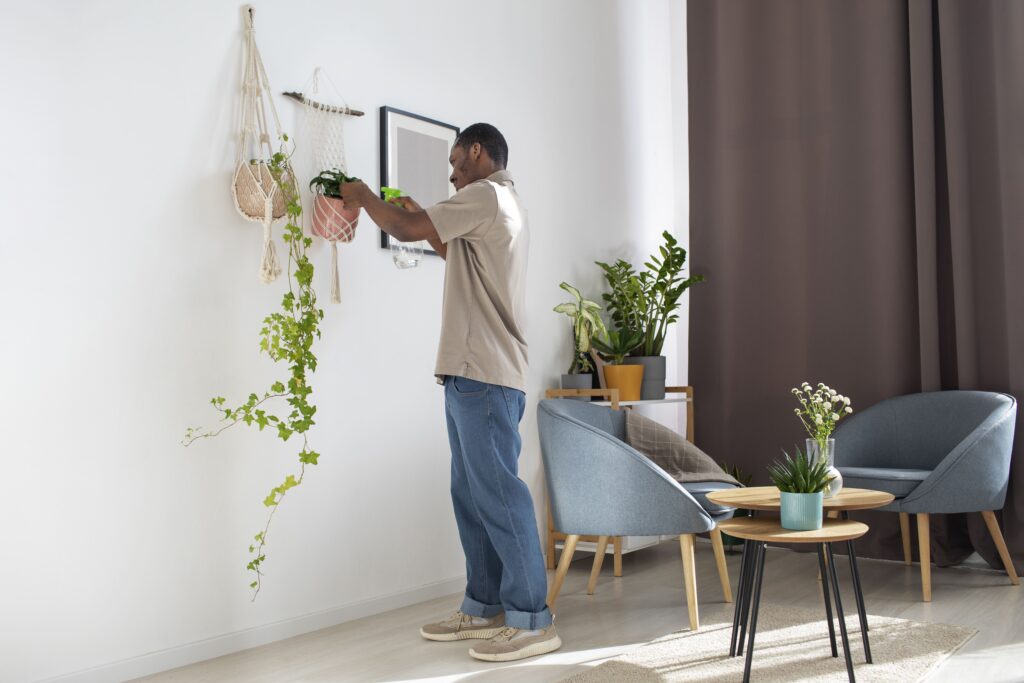Your living room is the heart of your home—a space where you relax, entertain, and create memories. But how do you turn this central area into a stylish, functional, and inviting space? If you’re wondering how to decorate a living room, you’re not alone. Decorating a living room can feel overwhelming, but with the right approach, it can also be an exciting and rewarding process. In this guide, we’ll walk you through everything you need to know to create a living room that reflects your personality, meets your needs, and feels like home.
Understanding Your Space
Before diving into furniture shopping or picking out paint colors, it’s essential to understand the space you’re working with. A well-thought-out plan will save you time, money, and frustration.
1.1 Assessing Your Living Room Layout
The first step in decorating your living room is to evaluate its layout. Start by measuring the dimensions of the room, including the length, width, and height. This will help you determine what furniture will fit comfortably without overcrowding the space. You can use a free online tool like RoomSketcher to map out your room layout digitally before buying furniture.
- Identify focal points: Does your living room have a natural focal point, such as a fireplace, large window, or built-in shelving? If not, you can create one with a statement piece like a bold piece of art or a stylish TV stand.
- Consider traffic flow: Ensure there’s enough space for people to move around comfortably. Avoid placing furniture in pathways or blocking doorways.
1.2 Analyzing Natural Light and Room Features
Natural light plays a significant role in how your living room feels. Rooms with ample sunlight can handle darker colors, while dimly lit spaces benefit from lighter tones to brighten the area. Learn more about how lighting affects paint colors at Sherwin-Williams’ lighting guide
- Take note of architectural details: Features like crown molding, exposed beams, or high ceilings can influence your design choices. Highlight these elements rather than hiding them.
Defining Your Style
Your living room should reflect your personal taste while remaining functional. Defining your style will guide your decisions and ensure a cohesive look.
2.1 Popular Living Room Styles
Here are some popular living room styles to consider:
- Modern: Clean lines, neutral colors, and minimal decor.
- Traditional: Classic furniture, rich colors, and ornate details.
- Minimalist: Simple, clutter-free spaces with a focus on functionality.
- Bohemian: Eclectic decor with vibrant colors, patterns, and textures.
- Scandinavian: Light, airy spaces with natural materials and muted tones.
- Industrial: Raw, unfinished elements like exposed brick and metal accents.
2.2 How to Choose a Style That Fits You
To find the style that suits you best:
- Assess your preferences: Do you prefer bold colors or neutral tones? Do you like sleek furniture or cozy, overstuffed pieces?
- Match your lifestyle: If you have kids or pets, opt for durable materials and practical layouts.
- Create a mood board: Collect images of living rooms you love to identify common themes.
Choosing a Color Palette
Color sets the tone for your living room and ties the design together.
3.1 The Psychology of Color in Living Rooms
Colors can influence mood and energy levels. For example:
- Blue: Calming and serene, perfect for relaxation.
- Yellow: Cheerful and energizing, great for social spaces.
- Gray: Neutral and versatile, ideal for modern designs.
- Green: Refreshing and natural, pairs well with plants.
3.2 Tips for Selecting Paint and Accent Colors
- Coordinate wall, trim, and ceiling colors: Use lighter shades for ceilings to make the room feel taller.
- Experiment with accent walls: A bold color or patterned wallpaper can add depth and interest.
- Incorporate pops of color: Use throw pillows, rugs, or artwork to introduce vibrant hues.
Selecting Furniture
Furniture is the foundation of your living room design. Choose pieces that balance style and comfort.
4.1 Essential Living Room Furniture Pieces
- Sofas and sectionals: The centerpiece of your seating area.
- Armchairs and accent chairs: Add extra seating and visual interest.
- Coffee tables and side tables: Functional surfaces for drinks, books, and decor.
- TV stands and media units: Keep electronics organized and stylish.
Check out IKEA’s living room solutions for affordable and stylish furniture ideas.
4.2 Arranging Furniture for Comfort and Flow
- Create conversation areas: Arrange seating to encourage interaction.
- Maximize seating without clutter: Use multi-functional furniture like ottomans with storage.
- Adapt to room size: In small spaces, opt for compact furniture; in larger rooms, use area rugs to define zones.
Layering Textures and Fabrics
Textures add depth and warmth to your living room.
5.1 Importance of Texture in Living Room Decor
Mix materials like wood, metal, glass, and textiles to create visual interest. For example, pair a sleek leather sofa with a soft wool throw. For inspiration, explore HGTV’s texture layering tips.
5.2 Choosing Rugs, Curtains, and Throws
- Rugs: Choose a size that anchors your furniture. A rug should extend under the front legs of your sofa and chairs.
- Curtains: Hang them high and wide to make windows appear larger.
- Throws and pillows: Use these to add color, texture, and coziness.
Lighting Your Living Room
Lighting can transform the ambiance of your living room.
6.1 Types of Lighting
- Ambient lighting: Overhead fixtures like chandeliers or recessed lights.
- Task lighting: Floor lamps or table lamps for reading and activities.
- Accent lighting: Spotlights or wall sconces to highlight artwork or architectural features.
6.2 Lighting Tips for Different Moods
- Layer light sources: Combine different types of lighting for flexibility.
- Use dimmers: Adjust brightness to suit the occasion.
- Consider smart lighting: Control lights with your phone or voice for convenience.
Adding Wall Art and Decor
Wall decor adds personality and completes your living room.
7.1 Selecting Art That Reflects Your Style
- Types of art: Paintings, prints, photography, or sculptures.
- Gallery walls: Arrange a collection of smaller pieces for a curated look.
7.2 Mirrors, Shelves, and Decorative Accents
- Mirrors: Reflect light and make the room feel larger.
- Shelves: Display books, plants, and decorative objects.
Incorporating Plants and Greenery
Plants bring life and freshness to your living room.
8.1 Benefits of Indoor Plants
- Improve air quality.
- Boost mood and reduce stress.
According to NASA’s Clean Air Study, certain indoor plants help purify indoor air
8.2 Choosing and Placing Plants
- Best plants for living rooms: Snake plants, fiddle leaf figs, and pothos.
- Creative displays: Use hanging planters, plant stands, or group pots of varying heights.
Personalizing Your Space
Make your living room uniquely yours.
9.1 Displaying Personal Collections and Mementos
Showcase travel souvenirs, family photos, or heirlooms to add character.
9.2 DIY Decor Projects
Create custom art, refurbish old furniture, or craft decorative items for a personal touch.
Decorating on a Budget
You don’t need to spend a fortune to create a beautiful living room.
10.1 High-Impact, Low-Cost Changes
- Paint walls for an instant refresh.
- Rearrange furniture to improve flow.
- DIY art or decor.
10.2 Where to Splurge and Where to Save
- Splurge: Sofas, rugs, and lighting.
- Save: Accessories, throw pillows, and wall art.
Common Mistakes to Avoid
11.1 Overcrowding the Space
Leave room to breathe—less is often more.
11.2 Ignoring Scale and Proportion
Choose furniture that fits the size of your room.
11.3 Poor Lighting Choices
Avoid relying on a single light source.
11.4 Neglecting Personal Style
Don’t follow trends blindly—stay true to your taste.
Seasonal and Trend Updates
12.1 Refreshing Your Living Room for Each Season
Swap out pillows, throws, and decor to match the season.
12.2 Incorporating Current Decor Trends
Experiment with trends like bold patterns or sustainable materials in small doses.
Conclusion
Decorating a living room is a journey of creativity and self-expression. By understanding your space, defining your style, and layering elements like color, furniture, and decor, you can create a living room that’s both functional and beautiful. Remember, the best living rooms are those that feel personal and inviting. So, don’t be afraid to experiment and make it your own!



